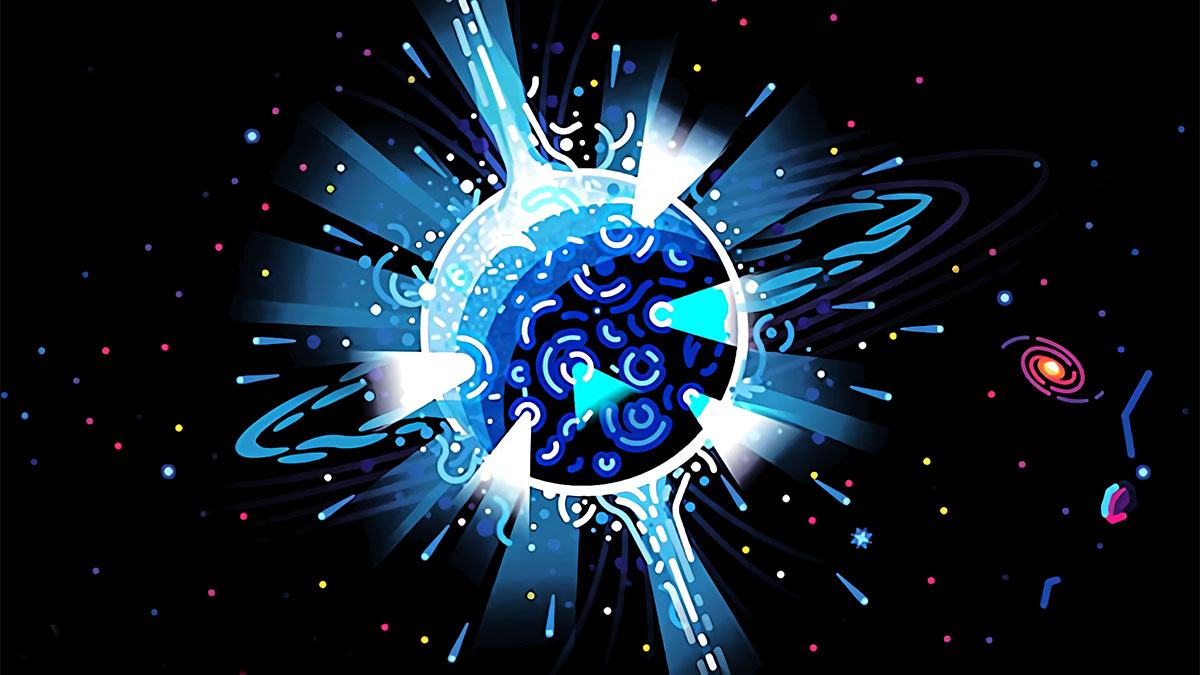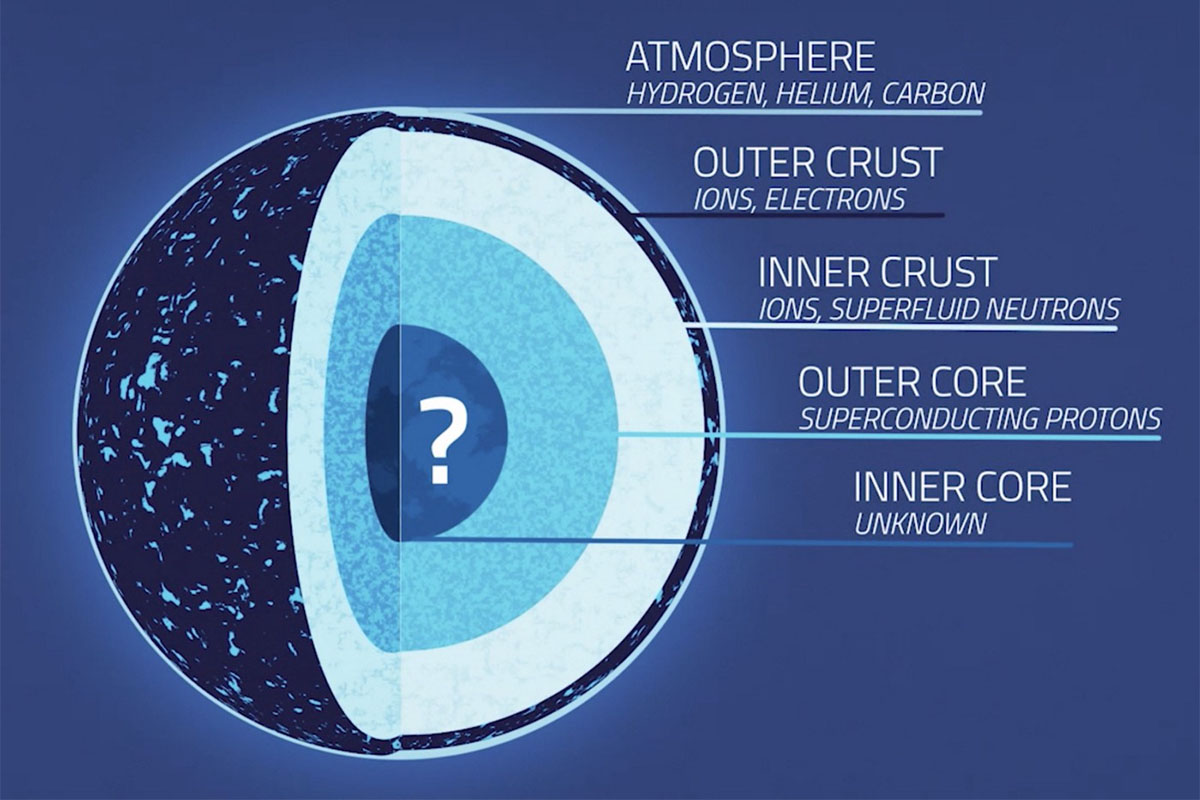why neutron stars may be the coolest objects in the universe

Popular science and science fiction have long been fascinated by black holes, and for very good reason. They’re objects whose widespread existence seems to defy the laws of the universe as we know them and create numerous paradoxes, and they may very well be the last things to die as the universe cools into frozen nothingness. But another kind of stellar cadaver is also no slouch when it comes to extreme phenomena, boggling scientists’ minds as they discover more and more about what makes them tick. Neutron stars may be zombies left behind by explosions of huge, dying suns that weren’t heavy enough to fully implode, and seem like failed black holes at first glance, but they’re worth a closer, more comprehensive look.
Whereas a black hole can be thought of as a tear in the fabric of space and time, neutron stars are explosions of stars that could swallow Earth millions of times over squeezed into a volume that could easily fit in a typical city. Imagine trapping a small nuclear blast into something the size of a grain of salt for billions of years and you’ll start to get the picture of just how extreme of an object you have on your hands. They can’t grow larger or lose mass, so their innards just boil for eons at temperatures that boggle the mind, meaning that some really weird things are bound to happen when they interact with the cosmos around them, some of which scientists didn’t even know were possible.
they bend light around themselves
One of the most fascinating features of black holes is their gravitational tides intense enough to make light orbit around themselves, creating a warped, fisheye look at that’s going on behind their invisible bulk. And while light can escape a neutron star, their gravitational wells can pull off the same trick. In fact, if you were to fly by one, you’d see a tiny, aggressively spinning ball of blinding blue light surrounded by a halo of distorted space reflecting the stars it should be obstructing. The electric blue color in which it emits much of its radiation is a common fixture in neutron star illustrations, but the warped halo of light is very seldom seen outside scientific diagrams meant for astrophysical papers.
their quakes can be felt halfway across the galaxy
Everything about a neutron star is under extreme stress, so when even a little bit of that stress is released for a fraction of a second, the results can be terrifying. Neutron stars have quakes, just like normal stars that created them, probably from the convection of ions under their very dense crusts. When a major one happens, the resulting movement may be a centimeter or so at the very most, but the energy released would register at an apocalyptic 32 on the Richer scale, some 100 quintillion times stronger than the biggest earthquake we think ever happened on Earth after an impact of an asteroid as big as Mount Everest. With that much power, neutron star quakes have been able to rattle our instruments from 50,000 light years away.
they may be the answer to an astronomical mystery
For years, radio astronomers have been trying to pin down the objects responsible for bursts of activity lasting for just fractions of a second across the universe. We’re still not sure where these cosmic shrieks are coming from with absolute certainty, but all signs seem to point to a type of neutron star called a magnetar. These objects have a magnetic field so intense they could wipe all your electronic devices from a quarter million miles away. From 600 miles away, that magnetism will pull apart your very atoms. Quakes on magnetars and instabilities in their fields could create a very swift, powerful, and extremely energetic event that would register as a chirp on a radio telescope over and over again, matching the data seen by researchers.

What causes these intense magnetic fields? The different rates of rotation of a neutron star’s internal layers. Since the star rotates so quickly due to the conservation of momentum at the moment of its birth, its internal layers also pick up a great deal of inertia. But since the layers are made of different arrangements of exotic particles, they will flow at different rates inside the object, generating extremely powerful and complex magnetic currents. Studies show that while neutron stars should have two primary magnetic poles, as many as four aren’t out of the realm of possibility. The strength of the resulting magnetic fields is mind-boggling, topping out at a quadrillion gauss compared to Earth’s 0.6 gauss and the Sun’s one.
some neutron stars may be too stubborn to become black holes
Speaking of inertia imparted on neutron stars by their progenitors and fast radio bursts that puzzle astronomers, there is another hypothesis about neutron stars worth mentioning, one which sees them defy their destiny to become black holes and hold on from total collapse with nothing more than their insane rotational speed. Known to theoretical astrophysicists as SURONs, these massive neutron stars spinning over 1,000 times per second could relieve just enough pressure on their innards to keep from imploding for millions, if not billions of years. Eventually they’ll collapse with a piercing, energetic scream that will resonate across the universe, but they’re not going down without a fight.
their crusts may contain the strongest material in the universe
Nuclear pasta sounds like a gag in a Tex Avery cartoon from the late 1950s, but it’s actually a name for a material scientists think exists in the lower layers of a neutron star’s crust. Made of atomic nuclei stripped of electrons and combined under pressures measured by numbers with far too many zeroes to meaningfully convey, this substance would be ten billion times stronger than steel and effectively indestructible. If we were able to extract it, it would look like sheets of lasagna and a piece the size of a sugar cube would weigh as much as a mountain. We’d never be able to build anything out of it but in case we wanted a benchmark for a material immune to anything the universe can throw at it, it looks like we’ve got one.
we could use them to navigate deep space
Neutron stars tend to emit radioactive flares from their poles with extremely regular intervals, so much so that when they were first discovered, astronomers wondered if they were an alien signal. With their motion and behavior often compared to lighthouses, a team of astronomers asked what would happen if we started treating them as such for deep space missions and in the process created a mathematical proof of concept for a galactic GPS. If thousands of years from now, massive generation ships filled with humans are exploring the Milky Way, they may be doing it by carefully tracking the clockwork-like beacons of zombie stars. And who knows, a few ships may try to fly by one to collect valuable scientific data.
they can form planets
Finally, let’s imagine that we’re on one of these imaginary ships flying by a neutron star to get a glimpse at our cosmic guide. What would we find around it? Well, we’d certainly find a nebula and the warped field of light created by its gravitational tides. But would you believe we might find a few planets orbiting it? These worlds wouldn’t be survivors of the supernova that created the neutron star, that would be pretty much impossible. No, they would’ve condensed from a field of debris and heavy elements, then drifted into stable orbits around the stellar cadaver. This was thought to be purely theoretical but the very first time astronomers looked for worlds around other stars, they found them orbiting pulsars, active neutron stars emitting death beams of radiation.
Oddly enough, Soviet science fiction author Ivan Yefremov imagined such a world populated by tentacled energy vampires hiding from the fury of a pulsar in the icy darkness in his 1957 novel Туманность Андромеды, or Andromeda Nebula. (Which I read as a kid and can’t recommend enough, by the way.) His vision presented a bleak, cold, heavily irradiated desert on which you didn’t want to crash land. If the hostile conditions didn’t get you, eldritch horrors desperate to survive them would. Amazingly, he may have been right about both because some researchers think that planets in a habitable zone around a neutron star wouldn’t be completely out of the question.
Life on these worlds probably wouldn’t be pleasant. Being hit by the pulsar’s beam would make the sky resemble a strobe light and unleash lethal radiation with every strike that would swiftly sterilize the surface almost every millisecond. But if a planet’s orbit avoided direct bursts, a thick atmosphere, millions of times denser than Earth’s, could hold off the worst of the flares emitted by the neutron star. It’s possible that some very sturdy bacteria could evolve deep in the crust, feeding on thermal energy and vents in volcanic tubes and caves. It seems like a long shot, but to paraphrase an illustrious fictional scientist, one thing we can always count on is that life, uh, finds a way.





